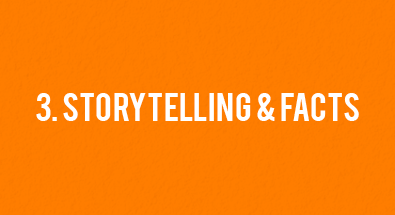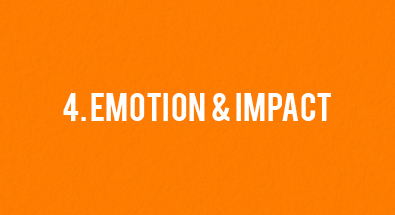Changing the way accountability stories are written takes research, preparation, listening and even a bit of psychology. Here are some recommendations from experts we’ve talked to on persuasion and communications. We’ve arranged the recommendations into six categories: Audience, Data, Storytelling, Emotion, Words, and Shareability. For each, we’ve included projects that demonstrate some of the effective ways to report on difficult issues and facts.
1. Your audience
How well do you know your audience? Do you know what they understand, don’t understand and would like to know more about?
“If someone gave me $10 million to study explainer journalism,” says NYU’s Rosen, “the first thing I would do is to engage in a massive act of listening.”
This “big listen” needs to encompass issues and questions that aren’t typically asked, Rosen says. For instance, asking the usual “What are the important issues in this election?” is not the same as “What would you like the candidates to be discussing now?” says Rosen.
At press conferences, skip the bandwagon journalist questions: Ask questions that answer what your audience wants to know.
“Listen in a lot of ways,” says Rosen, including face-to-face conversations, polls, and talking to “people who know what people think” such as ministers and leaders of community groups. Armed with that information, you can begin to develop a template for coverage.
And when you choose the topics to explain and fact-check, think specifically about who you’re addressing.
“Target the people who are unsure,” says Tali Sharot, an associate professor of cognitive neuroscience at University College London and an MIT visiting professor. “The most likely people to be swayed are the people in the middle” — those who aren’t sure what to believe.
And, Sharot says, don’t assume everything is obvious. For instance, if you’re fact-checking the controversial issue of childhood vaccinations and autism, explain which diseases are targeted by vaccinations. “What are these diseases and what do they do to children?”
2. Data and visualization
Sharot for one argues that, in teaching and learning, “Figures are better than text. They’re easier to process, they’re quicker to process, they grab our attention.” And charts made from that data can have more impact on readers, research indicates.
But it’s far from foolproof, says Sharot. “All of that is good but that still doesn’t solve the problem that if someone comes in with a belief” — for instance, about gun control, childhood vaccines, immigrants, border walls — “I think their reaction will still be the same. They’ll think there’s other data. Alternative facts.”
In that case, she recommends trying to include data from sources across the political spectrum. Find “facts and figures that confirm what both sides believe,” she recommends. Try to find reliable data that supports a point on which most people can agree. For instance: “That project will cost us a lot of money.”
3. Storytelling and facts
Michael Specter, a New Yorker writer and author of the book “Denialism,” says that “facts are not enough.”
“You need to connect with people on a basic level about things. And when you do that, they respond. But we don’t sit down and talk to them. We just preach.”
One way to evoke response and engagement is to surround your facts with a story that sounds familiar. Say you’re preparing a story about health care plans. While you might think that most audiences will enjoy an unusual anecdote about a patient, most people want to hear stories that are familiar and relatable, says Dan Gilbert, a social psychologist and Harvard professor.
“…if our listeners aren’t already familiar with the topic we’re talking about,” Gilbert said in a recent interview, “they get lost really, really quickly.”
Using facts and data is important especially in controversial or complex stories, but as “On The Media” host Brooke Gladstone said on a recent show, context is just as essential.
“Make sure that those facts can fit into the lives of people who don’t agree with you,” said Gladstone, author of “The Trouble with Reality: A Rumination on Moral Panic in our Time.”
“In other words, you have to place them in a context, you have to explain their relevance and then you have to wait” for indications of understanding.
4. Emotion and impact
Presenting facts can at times be a colorless, sterile endeavor. But emotions can play a part in how or if people will accept facts — and presentations that use videos, photos and interactives can better illustrate those emotions. After all, hyperpartisan sites have long tapped into emotions like fear and anger to engage people on politically divisive social issues.
One of Rick Crotts’ favorite explainers is a comic-strip story of an undocumented immigrant, who, as a college student, faced deportation.
The comic strip’s reporter, Ryan Schill, said in an interview that “comics allow us to really put a face to the immigration issue in a way that even broadcast can’t. Using direct quotes…and incorporating them with art drawn directly from interviews and research gives the story a lot of power.”
Jake Halpern, an author of the fully reported graphic narrative, “Welcome to the New World,” says in a recent American Press Institute interview that the strengths of strip-style visuals “are these quiet visual moments that speak more than words could.”
Cartoon illustrations don’t need to be strip-style or completely developed to be effective, however. Mohit Mamoria recently explained the complexities of Blockchain using computer-generated characters and simple drawings
As artists and designers know, even typography can signify certain emotions. Writer and designer Ben Hersh recently looked at the messages sent by particular typefaces and warned: “Typography can silently influence…and it can do this as powerfully as the words it depicts.”
In London, a group of musicians is translating climate change data into music, hoping to reach people who are resistant to climate facts with their “Climate Symphony.”
“These are still hard facts — that’s the beauty of it,” says one of the creators. “It’s still data, it’s just using sound as the reporting tool.”
5. Words matter
Projects that effectively present complex topics are often short on words, focusing instead on visuals. When a presentation isn’t “overwhelmed with large amounts of text and you are more willing to invest the time to read the information…before you know it, you have consumed the entire story and you’re surprised you have done so,” says Crotts.
Says Tampa Bay Times reporter Caitlin Johnston, who helped create the LEGO project described later in this report: “The writing needs to be tight and precise without being stiff.”
Limited text doesn’t mean words aren’t important; in fact, fewer words means each one should be chosen carefully.
Andrew Newberg, author of “Words Can Change Your Brain,” suggests paying attention to the number of “negative” and “positive” words. He recommends using three positive words, statements or ideas for each one that has a negative connotation.
“There’s a lot of evidence to show that negative words and negative emotions are detrimental to the brain, while positive words and positive emotions are beneficial,” said Newberg, director of research at Thomas Jefferson University Hospital and Medical College, in an interview with Salon. “When you get into a dialogue with somebody to discuss any particular issue, a three-to-one ratio is a relatively good benchmark to think about; you wind up creating the opportunity for a more constructive dialogue and hopefully a better resolution.”
6. Designing for shareability
Sharing a story may be the final step in the reader’s process, but how the content might be shared should be a discussion that happens early in the creators’ process.
Besides ensuring that the project looks good and works properly on social media platforms, Sharot notes that framing information in a positive or solutions-oriented manner will encourage more sharing.
“People are more likely to share a positive message than a negative message” — human nature, really, because positive messages reflect positively on the sharer, she said.
And, Sharot says, remember that “people want to be right.” Stories that provide readers with trustworthy, fact-checked information also will make them more likely to share widely.
At AL.com (Birmingham News and Mobile’s Press-Register in Alabama), a project called Reckon has launched accountability content specifically for the most shareable of platforms: Facebook and other social feeds. “In an era when journalism is changing faster than ever, we need to FEEL and BE relevant, modern, sharable, interesting, immensely adaptable,” says Michelle Holmes, VP of content.
Share with your network
- Recoding journalism: Some ideas to get started
- NPR: The annotated speech
- Purple: The Political Messenger
- Los Angeles Times: Story stacks
- Baltimore Sun: ‘Dismissed’: Focused on solutions
- Washington Post: Tracking Trump
- Asheville Citizen-Times: Explaining redistricting
- ProPublica: A tweetstorm of facts
- New York Times: Visualizing America’s problems
- Axios: ‘Smarter Faster’ videos
- A portfolio of examples
- Tampa Bay Times: The LEGO Project
- Wall Street Journal: Charting stock and tweets
- Improving accountability reporting: How to make the best of journalism better for audiences
- Your turn
You also might be interested in:
Successfully and efficiently marketing your work can be hard, especially for local news teams with limited resources, but marketing yourself to your audience is an essential skill for news organizations to drive revenue and promote sustainability.
As news teams begin thinking about their election coverage plans, it may feel like adding more tasks to an already full plate, with a fraction of the staff and resources they once had. But that doesn’t have to mean figuring out how to do more with less — maybe it’s doing less with less.
We reached out to Danielle Coffey, the CEO of American Press Institute’s parent corporation, the News/Media Alliance, to learn more about the legal fight for news organizations’ rights with AI.










